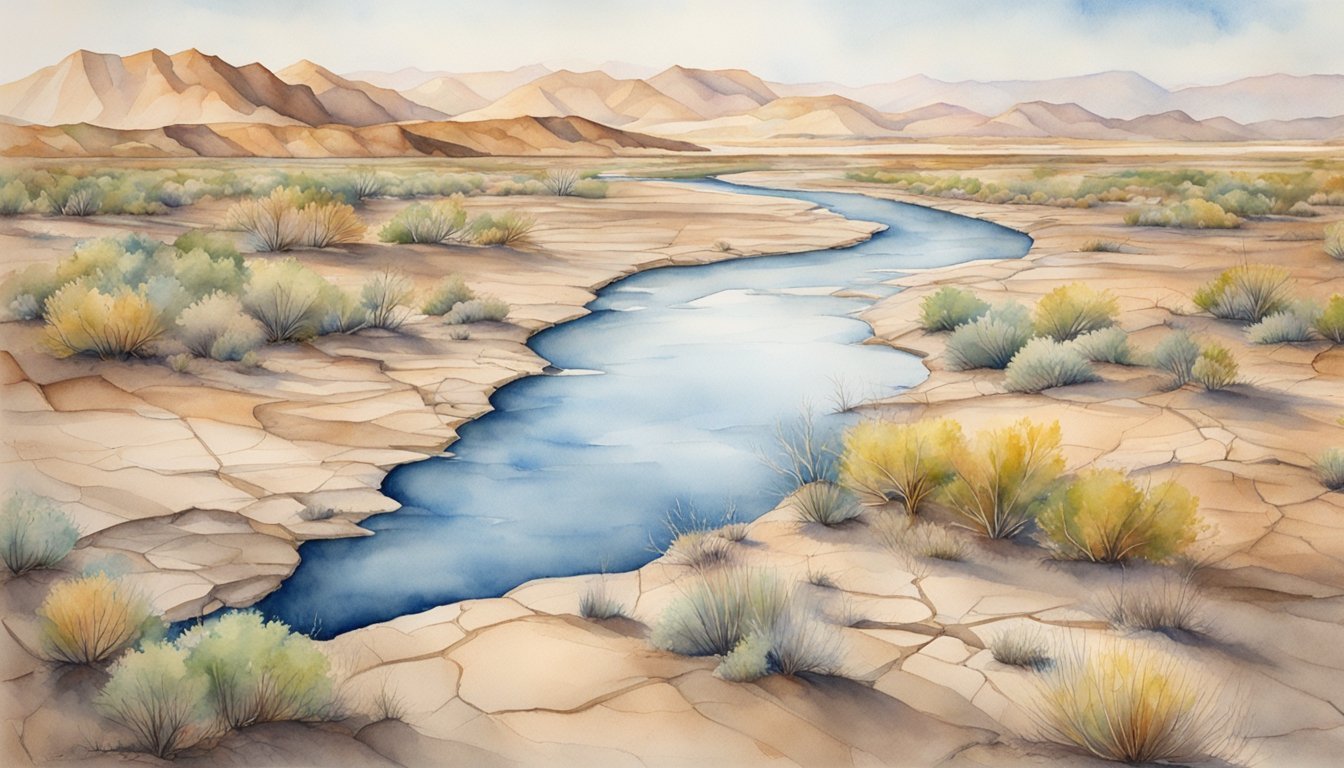Understanding the Colorado River Drought
In recent years, the Colorado River Basin has been significantly affected by a severe drought, impacting water supply for millions and the overall health of the region’s ecosystems.
Historical and Current Climate Factors
The Colorado River Basin has experienced drought conditions that are notably severe when compared to historical averages. Analysis from the U.S. Geological Survey indicates a trend toward drier climates, leading to a reduction in snowpack and natural flow of the river. Adding to the variability are storm events that once replenished much of the water supply but have become less predictable due to climate change.
Human Impact and Water Management
Human activities have had a profound impact on water resources. The water levels in major reservoirs like Lake Mead and Lake Powell, which supply electricity and water to millions, have been drastically reduced over time. This, in part, has been driven by the demands of agriculture, population growth, and energy production. Effective water management and policy, such as the Colorado River Drought Contingency Plan, play crucial roles in coping with these challenges. Collaboration among federal agencies, states, and local entities is essential to address the substantial strain on the river brought on by overuse and drought.
Natural Resources and Ecological Concerns
The Colorado River supports unique ecosystems, wildlife refuges, and is sacred to many Native American tribes. Unfortunately, the current drought stresses these natural resources, leading to changes in habitat conditions and impacting the ecological balance. Federal agencies like the U.S. Department of the Interior engage in extensive science and observation efforts to understand and mitigate these ecological concerns. Moreover, hydropower, another critical resource affected by declining water levels, is essential for producing electricity for millions in the American West.
Response to Water Crisis in the Colorado River Basin

In the midst of a historic drought, various entities have mobilized to address the diminishing water supply of the Colorado River, upon which 40 million people and countless ecosystems depend.
Law and Agreements Governing Water Use
Since 1922, water distribution from the Colorado River has been governed by the “law of the river,” a compact allocating water rights among seven states and Mexico. Changes in the Colorado River Compact over time, including amendments and the 1999 Colorado River Drought Contingency Plan, reflect attempts to adapt to significantly reduced water flows and reservoir levels at Lake Mead and Lake Powell, which have been impacted by continuous drought since 1999.
Adaptation Strategies for Water Scarcity
Strategies for adaptation in the face of water scarcity have varied across the basin. The Bureau of Reclamation has invested in water conservation and the development of real-time data through the Open Water Data Initiative. Agricultural districts, like the Palo Verde Irrigation District, along with urban suppliers, such as the Southern Nevada Water Authority, have implemented water-saving practices and invested in efficient water storage and conveyance infrastructure including the use of canals and reservoir storage optimization.
Collaboration Among States and Stakeholders
Collaboration has been key in the Colorado River Basin’s response to crisis. The states of Colorado, Arizona, California, Nevada, along with Mexico, have engaged in proactive dialogue. The partnership is extended to Native American Tribes, evidenced by initiatives like the Ten Tribes Partnership. The Metropolitan Water District of Southern California and other regional water suppliers work together to manage water for their respective areas’ needs, from drinking water to habitat conservation.

